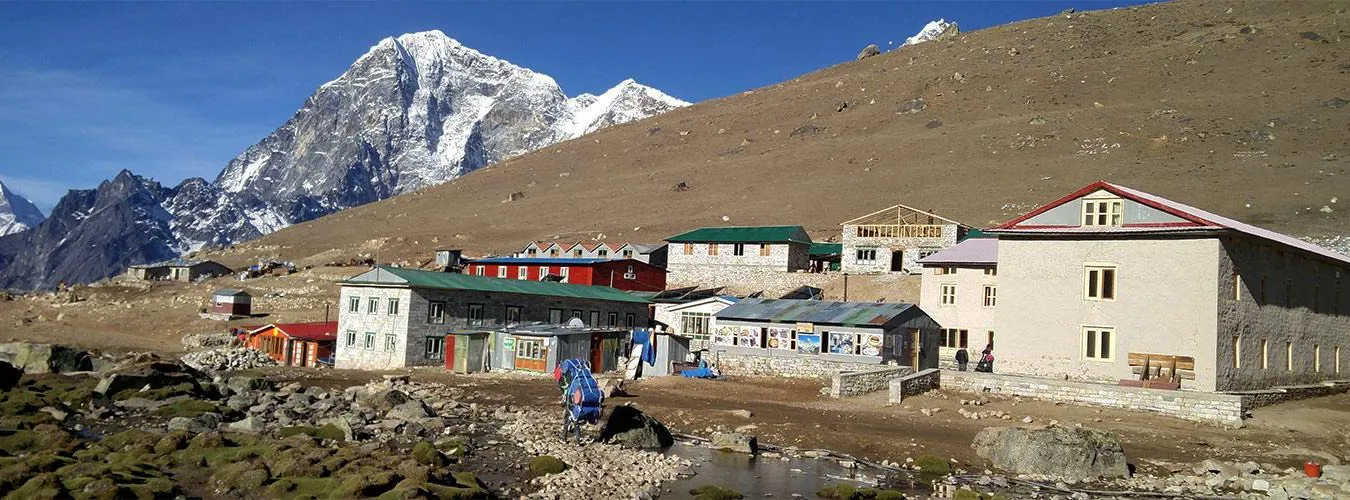
Lobuche Peak
- Places
- By Sanchita Pokharel
Lobuche, a place that blows your mind with its beauty and views. To be more precise, if Everest Base Camp Trek is a movie, it’s a place where our hero takes a deep breath before the showdown. It refers to both a high-altitude mountain village and two towering peaks (East and West).
Reaching this Lobuche Peak height makes you question, “Are you serious?” because your lungs will be negotiating for more oxygen, and your camera will be begging for another battery because, trust me, every view is postcard-worthy. Though it’s a tiny village (you can walk across it in about five minutes), it has peaceful energy.
Lobuche is along the route of the Classic Everest Base Camp Trek. Here, you can find trekkers and climbers from all over the world, swaddled in down jackets, sipping hot tea. It creates the best atmosphere as you can exchange conversation with fellow trekkers, telling tales of their Himalayan adventure. This village comes before the final push toward Gorak Shep and the legendary Everest Base Camp.
For the mountaineer enthusiasts, it is a launchpad for Lobuche East or Lobuche West, two peaks. They may have similar names but have very different personalities, both promising epic Himalayan panoramas. Though Lobuche Nepal is full of beauty and nature, reaching there is not a casual stroll. To prepare for your adventure to this gem of the Everest region, this blog will help you understand all the basic things before you go.
Key Facts:
- Location: Sagarmatha Zone, Solukhumbu District, Nepal, in the Khumbu Valley near the Everest Base Camp trek. Lobuche village lies about 150 km east of Kathmandu.
- Peaks: Two main summits, Lobuche East (6,119m/20,075ft) and Lobuche West (6,145m/20,161ft).
- Classification: Lobuche East is classified as a “trekking peak” (easier route), while Lobuche West is an “expedition peak” (more technical).
- Permits: Climbing this peak requires a Nepal Mountaineering Association permit.
- Best Time: Spring (Mar-May) and Autumn (Sep-Nov).
The Lobuche East Peak (6,119m) is one of the Himalayas’ classic 6000m “training peaks,” a favorite second challenge after Everest Base Camp. From the Lobuche summit, climbers enjoy a 360° panorama of giants like Mount Everest, Lhotse, Ama Dablam, Nuptse, Makalu, Cho Oyu, Pumori, Thamserku, Kantega, and more.
Check our Lobuche Peak Climbing Package
Related Packages
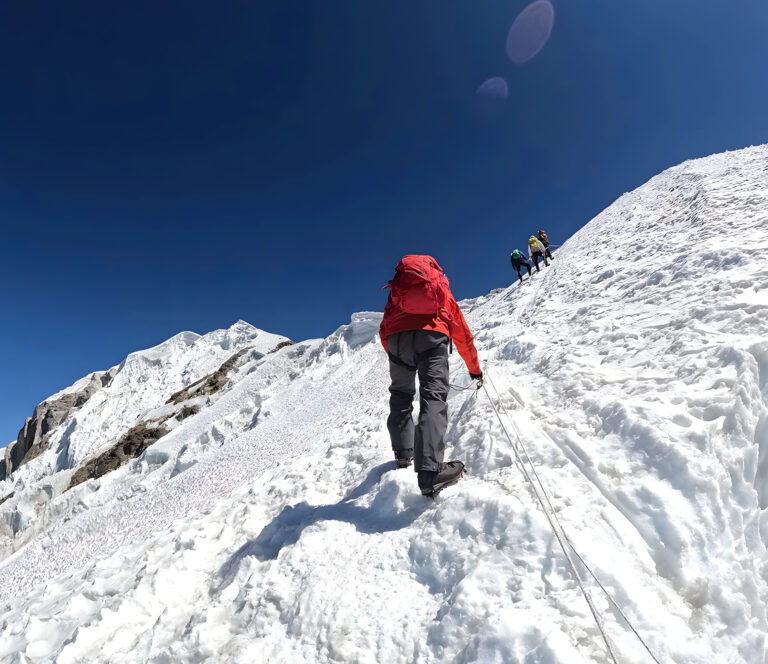
Lobuche Peak Climbing - 16 Days
6,119m/ 20,075ft
Moderate
All Inclusive Plan
What and Where is Lobuche?
“Lobuche” refers to a Nepalese mountain (also spelled “Lobuje”) and an adjacent village. The mountain massif sits right above the Khumbu Glacier in Sagarmatha National Park. The settlement of Lobuche Village is a tiny Sherpa community. Lobuche village’s altitude is 4,940 meters (16,210 feet). The village is one of the last stops on the classic Everest Base Camp trek, only about 8.5 km and a steep climb away from Base Camp itself.
Related Packages
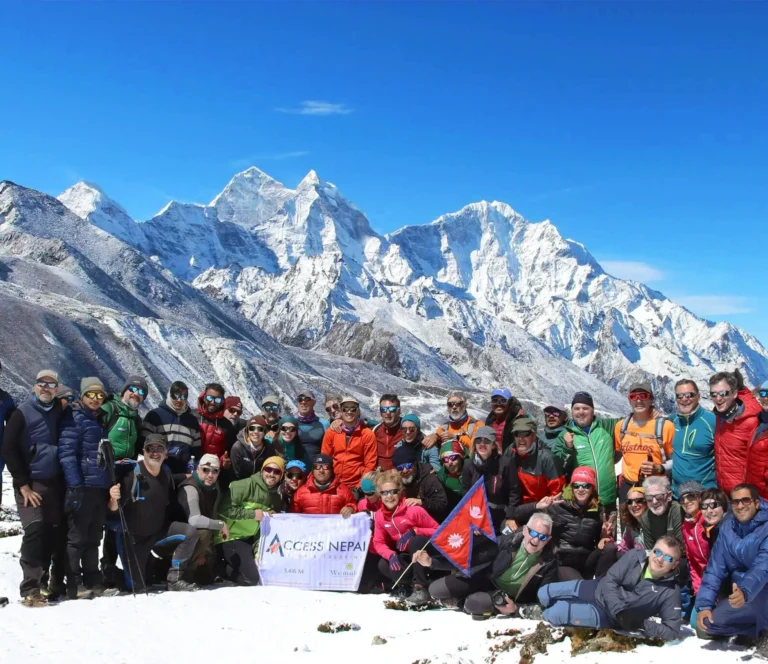
Classic Everest Base Camp Trek - 15 Days
5,550m/18,209ft
Moderate
All Inclusive Plan
Geographically, it lies in Nepal’s far east: roughly 150 km east of Kathmandu. It perches just above the treeless alpine zone at the foot of the Khumbu Icefall. From the village, the path branches; one way continues to Gorak Shep/Everest Base Camp, the other cuts toward Lobuche Peak Nepal base camp for climbers.
In short, Lobuche Nepal is a high mountain village and peak complex in the Everest region. The two peaks (East and West) are only 200 meters apart in height but differ greatly in climbing difficulty.
Lobuche Village
Lobuche Village is a rustic Sherpa settlement between Dingboche and Gorak Shep on the way to Everest. It’s the final teahouse community (elevation 4,940m) before reaching Base Camp. Though tiny (population 86), it’s a bustling hub during the trekking seasons (April/May, Sept/Oct) as hundreds of climbers, guides, and porters pass through. In fact, every Everest team stops at this mountain village on their way to acclimatize or to carry gear.
Accommodation in Lobuche, Nepal, is primitive but serviceable. Most lodges are stone huts with shared bunk beds and basic food. (Electricity and Wi-Fi are limited; battery charging requires a fee.) Despite the Spartan amenities, this village provides warm Sherpa hospitality high on the trail. Weather-wise, days in spring/autumn can reach 5°C to 10°C, but nights plunge well below freezing (down to -10°C or colder). In winter, temperatures can swing from 0°C in daytime to -20°C at night.
From this village (and especially from its high vantage points), trekkers gaze out at the jagged peaks encircling the valley. To the north, you see snowy East and West, to the east the towering Pumori and Lingtren, and beyond lie Everest’s imposing silhouette (though the summit itself is not directly visible from the village). In short, this village offers front-row seats to Everest’s realm, the humbling start to any Khumbu adventure.
The Peaks: Lobuche East vs. Lobuche West
This Mountain has two summits separated by a sharp ridge:
- Lobuche East (Far East), 6,119 meters (20,075 ft). This is the more frequently climbed summit, classified as a “trekking peak.” It offers a challenging scramble with fixed ropes near the top.
- Lobuche West, 6,145 meters (20,161 ft). Technically more difficult, West is an “expedition peak” requiring full mountaineering skills. Its name causes confusion: some agencies call East “Far East” and West “East,” but official NMA names are Lobuche West (6,145m) and Lobuche East (6,119m).
The two summits are connected by a knife-edge ridge, making traversing between them extremely perilous. Practically, climbers attempt one summit or the other. Lobuche East is the easier and more popular choice, though “easier” is relative (the final snow-ice ridge is still steep and technical). Lobuche West demands far more climbing experience (ice walls, mixed rock routes) and is less often attempted by ordinary trekking groups.
From the Peak’s summits, the view is spectacular. On a clear day, you can see the highest peaks of the Khumbu. From the top of East (6119m) or the adjacent ridge, climbers enjoy a 360° panorama including: Mount Everest (8848m), Lhotse (8516m), Nuptse (7861m), Cho Oyu (8188m), Ama Dablam (6812m), Makalu (8485m), Pumori (7161m), Cholatse, Thamserku, Kantega, and many more. It’s no wonder the summit of this peak is described as “an unforgettable adventure” with “superb views”.
Can You Climb Lobuche as a Beginner?
Although Lobuche East is one of Nepal’s popular “trekking peaks,” it is not a casual hike. Many companies market it as “beginner-friendly” for mountaineers, in the sense that it’s the first step beyond high-altitude trekking. Indeed, Lobuche and Island Peak (Imja Tse) are often the first 6000m climbs attempted by new climbers. But you should not underestimate the challenge.
A complete climbing novice should prepare carefully. You should at least have:
- Experience with strenuous high-altitude trekking (e.g., an Everest Base Camp trek).
- Good cardiovascular fitness (regular running, stair climbing, etc.).
- Basic familiarity with gear: practice walking in boots with crampons and using an ice axe, before the expedition.
- A positive attitude and respect for altitude.
Hiring an experienced guide and joining a guided group is strongly recommended. Guides will teach rope techniques and watch for safety. As the adventure-pulse blog notes, Nepal welcomes beginners onto peaks like Lobuche, but proper preparation is key.
Most climbers on this peak are fit trekkers, not absolute novices. Access Nepal Tours and Trekking provides highly experienced and licensed guides. If interested, we can design a perfect adventure.
How High is Lobuche?
Lobuche’s summits and village span a wide elevation range. The true peak of Lobuche East reaches 6,119 meters (20,075 feet). Its neighboring summit, West, is even slightly higher at 6,145 meters (20,161 feet). (To avoid confusion: the NMA officially calls the higher West peak “West,” even though some trekking operators mislabel it.)
The Lobuche village itself sits at about 4,940 meters (16,210 feet), already higher than many famous peaks outside the Himalayas. Everest Base Camp (5,364m) is 8.5 km away horizontally, with Lobuche village just to the southwest of it.
What is the Altitude Gain and Trek from Lobuche to Everest Base Camp?
From Lobuche village (4,940m) to Everest Base Camp (5,364m), the trail climbs roughly 424 meters in elevation over about 8-9 km distance. The hike is steep and rocky, more strenuous than many realize. According to trekking guides, the Base Camp trail “winds through steep valleys and rough terrain” and can take 6-7 hours due to altitude.
In more detail: Trekkers leave this village and continue past the wintering yak pastures toward Gorak Shep (5,180m). That section gains about 250m. From Gorak Shep, it’s another 4 km (around 2-3 hours) to Base Camp, with a climb of 150m. The entire loop (Lobuche → Gorak Shep → EBC) rewards hikers with views of Khumbu Icefall and nearby peaks.
In fact, along this trek you can glimpse Mt. Everest’s summit for the first time, alongside Ama Dablam, Nuptse, and Cho Oyu. So yes, you can see Everest from this mountain village (especially from EBC and the summit of Kala Patthar). From the Lobuche Peak summit, Everest is visible.
Summit celebration on East (6,119m). A Bahraini climbing team plants its flag at the top in October 2020. Successfully summiting East (with its 360° views) is a prized accomplishment for trekkers and climbers alike.
Can You See Everest from Lobuche?
This depends on your vantage point. From Lobuche village or Base Camp, Everest’s summit is actually not directly visible because of intervening ridges. The shape of Everest hides its peak from the classic trail. However, once you climb higher (e.g., to Kala Patthar or Lobuche East summit), Everest’s top comes into view.
- From Lobuche East summit (6,119m): Yes! Climbers at the top enjoy a clear, 360° panorama. Everest (8848m) dominates one side of the horizon.
- From Lobuche village (4,940m): Everest’s summit remains hidden; trekkers see Everest Base Camp and lower glaciers. One must climb a bit higher to glimpse Everest’s peak.
- From Lobuche to EBC trek: As trekkers move from Lobuche up to Gorak Shep and Kala Patthar, they eventually see Everest. Base Camp lies beneath the North face of Mount Everest, and the famous Khumbu Icefall is in front of Everest. At EBC and especially on the short hike to Kala Patthar (5,550m), Everest’s summit becomes fully visible.
In short, you won’t spot Everest’s top from the village huts at Lobuche, but summiting Lobuche East guarantees it on your horizon.
What Mountains Can You See from Lobuche?
Lobuche Mountain is surrounded by the who’s who of the Himalaya. From the summit of East, the skyline is filled with the world’s highest peaks.
Notable visible mountains include: Mount Everest (8,848m), Lhotse (8,516m), Nuptse (7,861m), Ama Dablam (6,812m), Cho Oyu (8,188m), Makalu (8,485m), Pumori (7,161m), Thamserku (6,608m), Kantega (6,701m), Cholatse (6,440m), and many more.
And numerous others fill the view. Trekkers and climbers often report literally being surrounded by giants, from the snowy broad Everest slopes to the razorback ridge of Ama Dablam; it’s a mountain buffet. Being here is a “great experience of standing on top of a Himalayan peak with superb views of Everest, Lhotse, Nuptse, Ama Dablam, and Pumori, among others”.
How Far is Mt. Everest from Lobuche?
Measured in straight-line distance, the summit of Everest is roughly 12 kilometers (about 7.5 miles) north-east of Lobuche village. The Everest Base Camp (5,364m) is much closer, only 8.5 km (5.3 miles) away.
This proximity is why climbers often use this place as a last camp on the way to Everest. Keep in mind, however, that the terrain is steep, so traveling between them on foot involves significant altitude change (from 4,940m up to 5,364m) and time.
For trekkers, the distance to Everest Base Camp is more meaningful than to the summit. It sits just southwest of EBC, and the hiking route passes through Gorak Shep to reach the campsite on the Khumbu Glacier. The popular Lobuche-Gorak Shep-EBC hike takes 6-9 hours in total, crossing rocky moraine and icy sections. Once at Base Camp, you’re at Everest’s foot, and Mount Everest is finally in view, along with its famous Icefall.
Danger and Risks
Lobuche Mountain is not extremely dangerous compared to big Himalayan expeditions, but it is a serious climb. Key risks include:
Altitude Sickness: At 6,119m, oxygen levels are about 47% of sea level. Altitude sickness (AMS, HACE, HAPE) is a real hazard. All climbers must acclimatize gradually (e.g., extra rest days at Namche/Dingboche) and know the symptoms. The guide advises moving slowly and considering medication if needed.
- Weather: The Khumbu weather changes rapidly. Even in autumn (the “dry” season), sudden storms can drop heavy snow and temperatures. Strong winds on the ridge can be gusty. Always check forecasts and be prepared to postpone the summit if the weather turns.
- Technical Sections: The summit ridge of East involves an exposed snow-knife-edge. A slip here can be fatal. Climbers are roped together and use fixed lines. Experience with crampons/ropes is essential.
- Avalanches/Seracs: The normal route avoids major avalanche paths, but steep corniced edges exist. In extremely bad weather or spring melt, large overhangs could collapse. Helmets are worn to mitigate falling ice.
- Cold & Fatigue: Nights at 6,000m can be brutally cold, risking frostbite. Hitting the summit late in the day means coming down in the dark. Hypothermia and exhaustion are constant dangers. Good sleeping gear and nutrition are vital.
In short, East is safest when treated with respect: go with an experienced team, stick to the acclimatization schedule, and never push if you feel strongly unwell. For this reason, independent climbing groups often state it is “not recommended to climb solo due to the technical challenges and risks involved”. But for prepared climbers, the dangers are well-managed.
Lobuche Peak Weather & Temperature
As noted, the weather is harsh due to Lobuche altitude. Here’s a snapshot of average conditions at Village (4,940m):
- Summer (June-Aug): Day 4 to 10°C; night -5 to -10°C. (Monsoon rains fall lower, but afternoon snow or rain is possible.)
- Autumn (Sept-Nov): Day 5 to 10°C; night -5 to -15°C. Clear, crisp air, especially in October.
- Winter (Dec-Feb): Day 0°C; night -15°C or colder. January is the coldest (average -8°C).
- Spring (Mar-May): Day 5 to 10°C; night -5 to -10°C. Post-winter snow melts, paths clear. Himalayan cherries/rhododendrons bloom.
Above the village, temperatures drop further. At Base Camp (5,400m), subtract another 5-10°C. And at the summit (6,119m), it can feel -20°C or colder with wind chill, even in spring/autumn. UV radiation is also higher, so sunburn is a risk.
In short, “Lobuche temperature” is always on the cold side. Remember: “Winter is snowy, with temperatures ranging from 0 °C to -20 °C” around the village. After dawn, however, afternoons often mellow, so climbers time their summit push for early morning.
It is a Himalayan adventure: a thrilling trek intertwined with high-mountain climbing. Its soaring peaks, dramatic ridges, and unsurpassed views make it a magnet for global trekkers seeking that “first big summit” experience. The dual identity, the village, and the peaks have something for everyone, from tea-house strolls to adrenaline-fueled summit bids.
For any traveler dreaming of the Khumbu, this destination is a must, a place where altitudes soar, temperatures plummet, and the panorama is nothing short of epic.
FAQ Section
How High is Lobuche?
Lobuche East is 6,119 meters (20,075 feet) above sea level. West is slightly higher at 6,145m (20,161ft). The nearby village is at 4,940m (16,210ft).
How Hard is Lobuche East?
Lobuche East is moderately difficult. It’s harder than a trek, easier than most Himalayan peaks. It’s graded PD+: climbers will encounter steep snow slopes and some rock scrambling. It requires mountaineering skills (rope, crampons, ice axe) on sections of the summit ridge. Most able trekkers can do it with training and a good guide. Without experience, East can be very hard, so preparation is key.
How Hard is Lobuche Peak?
Lobuche height is 6119m. For the successful summit, it demands good fitness and basic climbing skills. According to a climbing guide, East offers “moderate technical challenges”. Its difficulty is significantly more than simply hiking, but far less than an 8000m expedition.
Can You See Everest from Lobuche?
Yes, you can see the Everest from Lobuche. Along with Everest, trekkers can also see Ama Dablam, Lhotse, and other giants. However, from the village and base camp, Everest’s summit is hidden by other peaks. Only after ascending to Kala Patthar or East Peak will you spot Everest’s top.
What Mountains Can You See from Lobuche?
An entire Himalayan gallery! From this area (especially the summit), you can see Mount Everest (8848m), Lhotse (8516m), Nuptse (7861m), Cho Oyu (8188m), Ama Dablam (6812m), Makalu (8485m), plus slightly lower peaks like Cholatse, Thamserku, Kantega, Pumori, and many others. It’s one of the best vantage points in the world for peak-spotting.
How Far is Mt. Everest from Lobuche?
Everest’s summit is roughly 12 km in a straight line from the village, but more practically, Everest Base Camp is only 8.5 km from Lobuche. Keep in mind the trek involves steep terrain, so don’t underestimate the effort despite the short distance.
Can a Beginner Climb Lobuche?
Many first-time climbers try East, but it’s not an absolute beginner trek. The mountain is often called a “good first climb” for people who are new to real mountaineering. In practice, you should have some trekking experience and basic climbing preparation. Joining a guided group means you’ll learn on the job, but physically, you must be ready for high-altitude effort. If you’ve already done Everest Base Camp or comparable treks, Peak Nepal can be your next step up.
What is the Success Rate of Lobuche Peak?
With proper acclimatization and support, East’s success rate is very high, around 80% to 90%. This assumes climbers follow a sensible plan, don’t ignore symptoms, and have a competent guide. By contrast, more technical Himalayan climbs often have much lower success. So, it is one of the “safer” big Himalayan summits in terms of reaching the top.
Is Lobuche East Dangerous?
Lobuche East has its dangers like altitude sickness, cold, and technical sections. However, it is generally safer than higher technical peaks. Most accidents are because of altitude or poor judgment rather than objective hazards. It’s crucial to acclimatize and turn back if needed. Proper gear, layering for cold, and cautious movement on the ridge mitigate most risks. In expert hands, it’s a “controlled risk.” Remember, every Himalayan climb has dangers, but the East is among the more manageable with the right preparation.
Awards and Achievements
Access Nepal Tour and Treks has been recognized with TripAdvisor’s prestigious Travelers’ Choice Award for multiple consecutive years, reflecting our unwavering commitment to quality and clients’ satisfaction.













 6,119m/ 20,075ft
6,119m/ 20,075ft Moderate
Moderate All
Inclusive Plan
All
Inclusive Plan
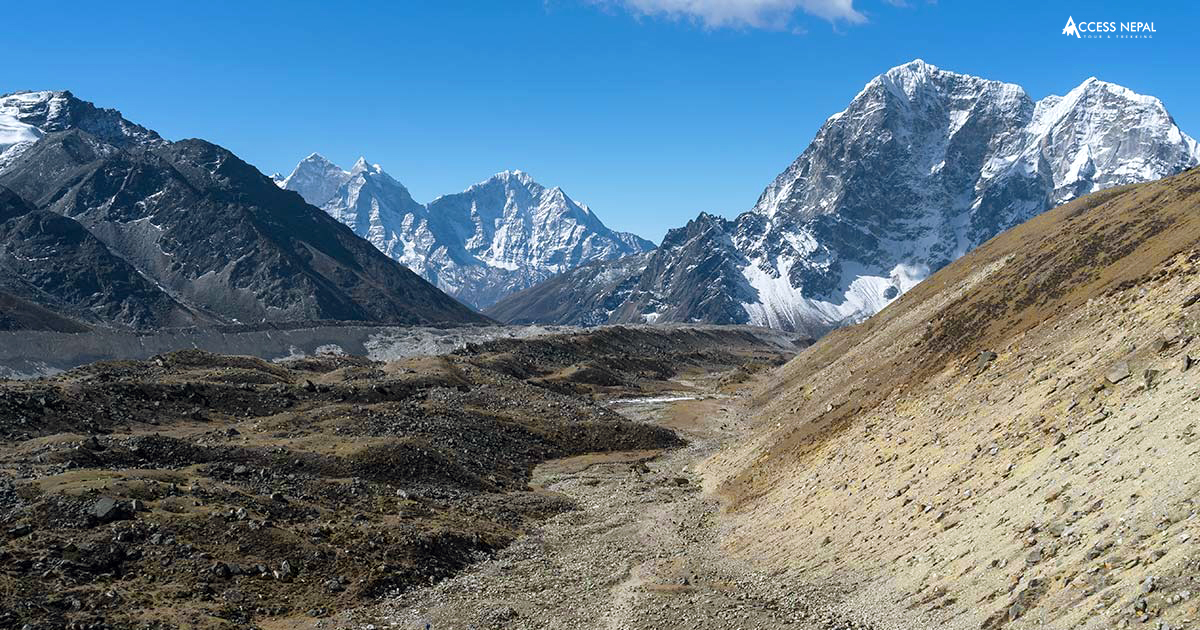
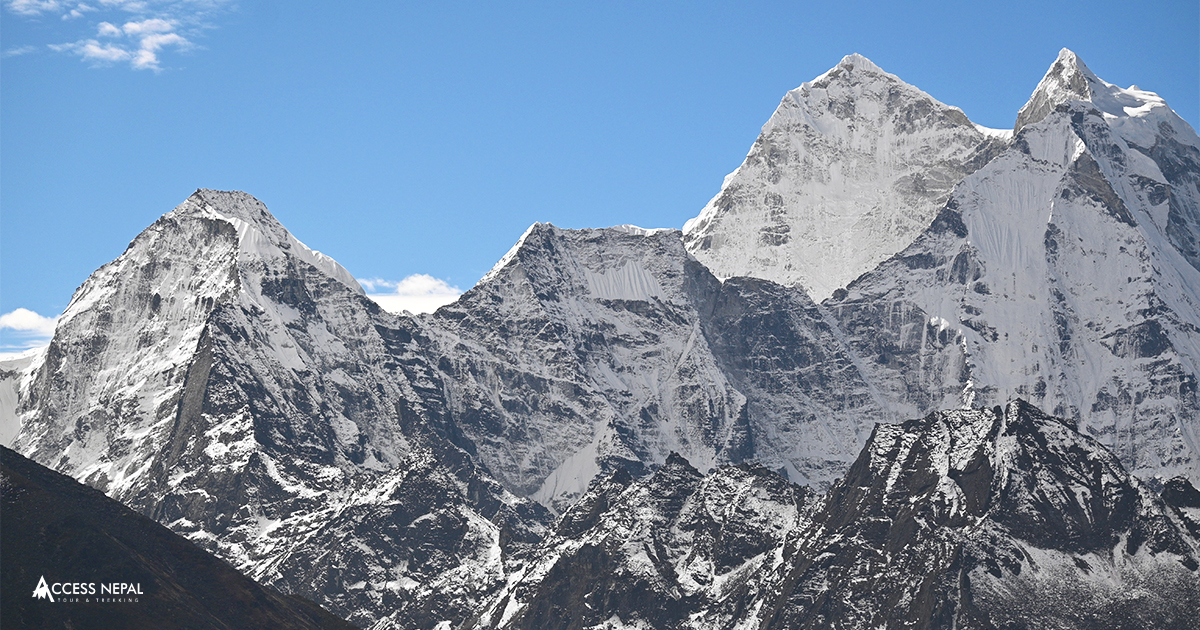
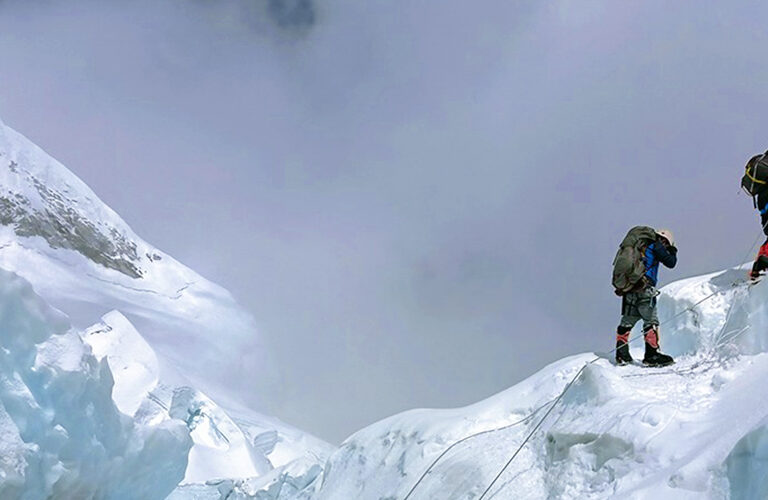
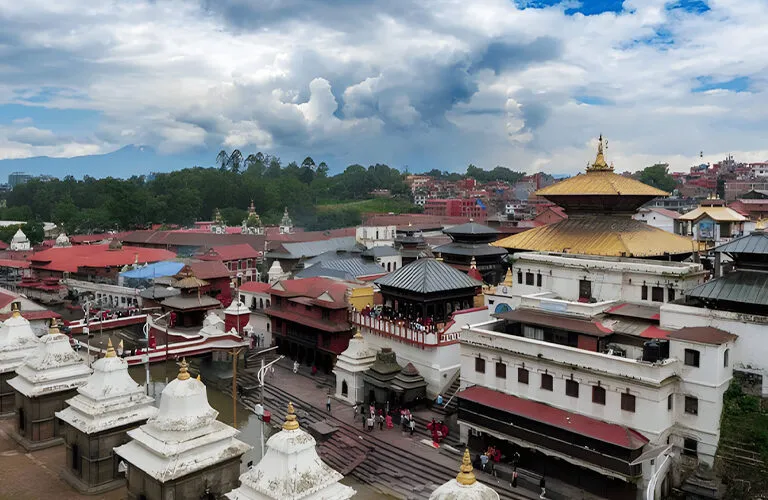
Leave Your Comment